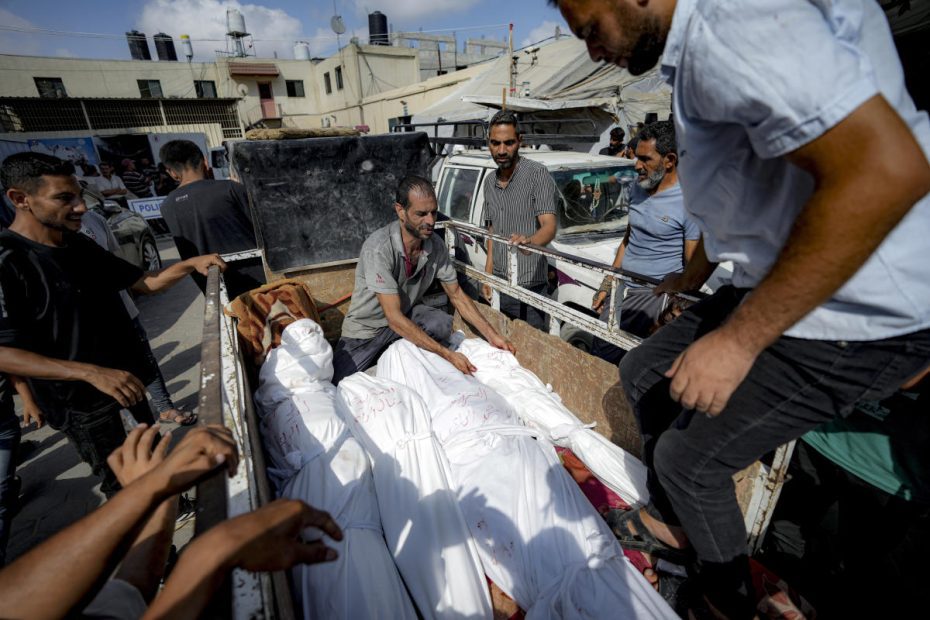KHAN YOUNIS, Gaza Strip — Israel said it targeted the shadowy Hamas military commander in a massive attack Saturday in the crowded southern Gaza Strip, killing at least 71 people, local health officials said. Hamas immediately rejected claims that Mohammed Deif was the target.
It was not immediately known whether Deif was among the dead. Israeli officials confirmed that he and a second Hamas commander, Rafa Salama, were targeted. A military official later said they were “still checking and verifying the outcome of the strike,” and did not deny that it took place inside Israel's designated safe zone.
Deif is widely seen as the chief architect of the October 7 attack that killed some 1,200 people in southern Israel and sparked the war between Israel and Hamas. He has been at the top of Israel's most wanted list for years, after Hamas' top Gaza official Yahya Sinwar, and is said to have escaped multiple Israeli assassination attempts in the past.
If Deif were killed, the ceasefire negotiations could fail and would be seen as a major Israeli victory in the nine-month war.
“These false claims are merely a cover-up for the scale of the horrific massacre,” Hamas said in a statement to Israel.
Gaza's Health Ministry said at least 289 others were wounded in the attack — one of the deadliest of the war — and that many of the dead and wounded were taken to nearby Nasser Hospital. Associated Press reporters there counted more than 40 bodies. Witnesses described a multi-strike attack.
“A number of victims are still under the rubble and on the roads, and ambulances and civil protection cannot reach them,” the Health Ministry said.
The Israeli military claimed that “more terrorists were hiding among civilians” and described the attack site as an area surrounded by trees, several buildings and warehouses.
Images of the aftermath showed a huge crater, charred tents, burned-out cars and household items strewn across the blackened earth. Victims were carried on the hoods and tailgates of cars, and on donkey carts and carpets.
Witnesses said the strike landed in Muwasi, the Israeli-designated safe zone that stretches from northern Rafah to Khan Younis. The coastal strip is where hundreds of thousands of displaced Palestinians have fled in search of safety, mostly sheltering in sweltering, makeshift tents with few amenities.
“This was designated as a safe zone full of people from the north,” said a displaced Palestinian man who declined to give his name. “Children were all tortured here. We collected their pieces with our hands.” He estimated there were seven or eight rockets and claimed that aid workers were also targeted.
In the hospital, a baby in a pink shirt, her face covered in sand, cried as she received first aid. A small boy lay motionless on the other side of the bed, one shoe missing. Victims lay on the floor amid blood spatter, bodies wrapped in white plastic with their names scrawled in marker.
An Israeli official said the attack was carried out inside a fenced-in area of Khan Younis run by Hamas, but he did not provide details about the exact location. He said it was not a tent complex but an operational complex. The official described the attack as precise and said it was estimated that many of the victims were “terrorists.”
Deif has been in hiding for more than two decades and is said to be paralyzed. One of the few known images of him is a 30-year-old ID photo released by Israel. Even in Gaza, only a handful of people are said to recognize him.
Meanwhile, mediators from the US, Egypt and Qatar continue to push to narrow the rift between Israel and Hamas over a proposed three-phase ceasefire deal and the release of hostages in Gaza.
The US-backed proposal calls for an initial ceasefire with a limited release of hostages and the withdrawal of Israeli troops from populated areas in Gaza. At the same time, the two sides will negotiate the terms of the second phase, which would see a full release of hostages in exchange for a permanent ceasefire and a complete Israeli withdrawal from Gaza.
Israel launched its campaign in Gaza following the October 7 Hamas attack, in which militants entered southern Israel and kidnapped about 250 people.
Since then, Israeli ground offensives and bombardments have killed more than 38,400 people in Gaza and wounded more than 88,000, according to the territory's health ministry. The ministry makes no distinction between fighters and civilians in its count.
More than 80 percent of Gaza's 2.3 million residents have been forced from their homes, with most now living in squalid tent camps, where they suffer from widespread hunger.

